Understanding how to choose a brand name is essential for e-commerce entrepreneurs, as it's a process that directly impacts your business's identity, perception, and long-term success, echoing the significance of naming a child.
In the crowded digital marketplace, a standout name is your first line of communication, your digital handshake. But where do you begin? How do you distill your brand's essence into a few powerful syllables?
This guide will walk you through the process, providing practical steps and insightful examples to help you craft a name that resonates with your audience and stands the test of time.
Why Your Ecommerce Brand Name is Really Important?


- It Helps People Remember You: Imagine you meet someone new. If they have a simple and catchy name, you're more likely to remember them later, right? It's the same with your brand name. A good name sticks in people's heads, so they can find you again.
- It Builds Trust: A professional-sounding name makes people feel like your business is serious and trustworthy. If your name sounds a bit off, people might not feel comfortable buying from you.
- It Shows What Your Business is All About: Your brand name can give people a hint about what you sell or what makes your business special. It helps create an image in their minds.
- It Helps People Find You Online (SEO): While your website and what you sell are super important for getting found on Google, having a brand name that includes words people might search for can also help a little bit.
- It Keeps You Out of Trouble: You need to make sure your brand name is free to use. This means someone else isn't already using it, and you can get the website address (like .com) and social media names for it. This helps you avoid legal problems later on.


Start selling custom products online with Printfuse.
Create a snapstore and sell products instantly!
How to Pick Your Perfect Ecommerce Brand Name: Step-by-Step
Step 1: Think About What Makes Your Brand Special
Who are you trying to sell to? (Your Target Audience) Think about the people who will be buying your products. Are they young or old? What do they like? Knowing who they are will help you choose a name they can connect with.
What's important to your brand? What do you believe in? (Your Brand Values and Personality) What feelings do you want people to have when they hear your brand name? Do you want to sound fun, serious, trustworthy, or something else?
What do you actually sell? (Your Products/Services) Do you want your brand name to tell people what you sell right away? For example, if you sell handmade soaps, you might want a name that hints at that. Or, you might want a more general name if you plan to sell other things later.
What makes you different from other businesses? (Your Unique Selling Proposition - USP) What makes your business special? Is it the quality of your products, your great customer service, or something else? Sometimes, your brand name can hint at what makes you different.
Once you have clear answers to these questions, you'll have a better idea of the kind of brand name that will fit your business. It's like having a map before you start your journey – it makes finding the right path much easier.


Step 2: Get Your Ideas Flowing (Brainstorming)
Now that you know what your brand is all about, it's time to come up with lots of name ideas. Think of this like throwing a party for your ideas – the more, the merrier! Here are some simple ways to get started:
Think of Words Related to Your Business: Write down words that remind you of what you sell, what you do, or how you want people to feel about your brand. For example, if you sell coffee, you might write down "bean," "brew," "morning," "energy," "wake."
Mix and Match Words: Take the words you wrote down and try putting them together in different ways. For example, "Morning Bean," "Brew Energy," "Wake Bean."
Use Parts of Words: Try using just the beginning or end of words and combining them.
Make Up New Words: Don't be afraid to invent words that sound good and fit your brand. Some of the most famous brands have made-up names!
Think About Sounds: Sometimes, a name just sounds good. Say your ideas out loud. Do they roll off the tongue? Are they easy to say?
Use a Little Help from the Internet (Carefully): There are websites that can help you come up with brand name ideas. These can be useful for getting started, but don't rely on them completely. Make sure the names they suggest really fit your brand.
The goal here is to get as many ideas as possible, even if they seem silly at first. You can always narrow them down later. Don't judge your ideas at this stage – just write them all down!
Step 3: Check If Your Ideas Are Good Ones
You've got a bunch of names now, that's great! But not all names are created equal. It's time to see which ones are the strongest. Think of it like trying on clothes – some will fit perfectly, and some won't fit at all. Here's what to look for:
Is it Easy to Remember? (Memorability) Say the name out loud. Is it easy for you to remember? Would it be easy for other people to remember after hearing it just once or twice? Short and simple names are often easier to remember.
Does it Fit Your Brand? (Relevance) Does the name make sense for what you sell and the feeling you want to create? Does it match the answers you came up with in Step 1?
Can You Actually Use It? (Availability) This is super important! We'll go into detail in the next step, but for now, just think: Is it likely that the website address (like .com) and social media names for this brand name are free?
Is it Easy to Say and Spell? (Pronunciation and Spelling) Can people say it correctly without struggling? Can they spell it easily after hearing it? If people can't pronounce or spell your name, they'll have a hard time finding you online or telling others about you.
Does it Mean Anything You Don't Want It To? (Meaning and Connotations) Think about what the name means. Could it have a negative meaning for some people? If you're selling to people in different countries, does the name mean something strange in other languages?
Will it Still Work Later On? (Longevity) Imagine your business grows and you start selling more types of products. Will your brand name still make sense? Avoid names that are too specific if you think you might expand later.
Does it Stand Out? (Uniqueness) Do a quick search online for businesses with similar names. You want a name that's different and helps you stand out from your competitors.
Go through your list of names and ask these questions about each one. You can make a list and put a checkmark or an 'X' next to each name for each question. This will help you see which names are the strongest contenders.
Step 4: Make Sure Your Favorite Names Are Free to Use (Check Availability)
You might have a few names that you really love after going through the last step. Now, it's time to see if you can actually use them. Think of this like checking if a house you want to buy is already taken.
Check if the Website Name (Domain Name) is Available: This is super important for your online store. You'll need a website address, usually ending in .com. Go to websites that sell domain names (like GoDaddy, Namecheap, or Google Domains) and type in the brand names you like. See if the .com version is available. It's also a good idea to check if other endings like .in (since you are in India) or .net are available too, just in case.
See if the Social Media Names are Free: Social media is a big part of online business. Check if you can get the same or very similar name on platforms like Facebook, Instagram, Twitter, etc. You want your brand name to be consistent across different places online. You can usually check this by going to the social media sites and searching for the name.
Do a Trademark Search: You want to make sure no other business has legally protected the name you want to use, especially in your business area. You can do a basic search on the website of your local trademark office (in India, you can check the website of the Controller General of Patents, Designs and Trade Marks).
While this might sound complicated, it's important to avoid legal problems down the road. You might even want to talk to a legal professional later on, but doing a basic search now is a good start.
This step is really important because you don't want to fall in love with a name only to find out you can't use it online or that someone else already owns it. It's better to check early in the process.


Step 5: Ask Others What They Think (Get Feedback)
You've done a lot of the work yourself, but getting feedback from other people is really helpful. Think of it like asking friends if they like a new outfit before you wear it out.
Share Your Shortlist: Pick a few of your top brand name choices (maybe 2-3). Don't share too many, or you might get overwhelmed.
Ask the Right People:
- Your Target Audience: If you know people who are likely to buy your products, ask them what they think. They are the ones you want to connect with.
- Friends and Family: They know you and might have good insights.
- Other Business Owners: They might have experience with branding and can offer valuable advice.
Ask Specific Questions: Don't just ask "Do you like this name?" Ask questions like:
What's the first thing you think of when you hear this name?
Is it easy to say and remember?
Does it sound like a name for an online store that sells [mention what you sell]?
Does it have any negative meanings for you?
Listen Openly: Be prepared to hear opinions you might not agree with. The goal is to get different perspectives. Don't argue or try to convince people to like a name. Just listen and take notes.
Getting feedback can help you spot potential problems with a name that you might not have noticed yourself. Maybe a name is harder to pronounce than you thought, or it reminds someone of something negative.


Start selling custom products online with Printfuse.
Create a snapstore and sell products instantly!
Step 6: Choose Your Name and Make it Official
You've reached the final step! It's time to pick the brand name that feels right and has passed all the checks.
Trust Your Gut: After considering all the feedback and information, go with the name that you feel most excited about and that best represents your vision for your business.
Act Quickly to Secure It: Once you've made your decision, don't wait!
- Register Your Domain Name: Go back to the domain registrar and buy the domain name (ideally the .com). Even if you're not launching your website immediately, secure it so no one else can take it.
- Claim Your Social Media Handles: Set up your accounts on the relevant social media platforms using your chosen brand name. This helps maintain consistency and prevents others from using your name.
- Start the Trademark Process: If you're serious about protecting your brand, consider starting the process of registering a trademark for your brand name. This can offer legal protection. You can look into how to do this in India through the official government channels or consult with a legal professional.
Start Using Your Brand Name: Begin incorporating your brand name into your business. Use it on your social media profiles, even if your website isn't live yet. Start thinking about your logo and other branding elements that will go with your name.
Choosing your brand name is a big milestone for your ecommerce business. Taking these final steps to secure it will set you up for success and help you start building your brand identity.
Examples of Great Ecommerce Brand Names (For Inspiration)


Zara:
Style: Short, memorable, and somewhat sophisticated. It doesn't directly tell you what they sell, but it has a strong, international feel.
Why it Works: It's easy to pronounce and remember across different languages. The simplicity adds to its perceived elegance. It allows them to expand into various clothing lines without being tied to a specific product name.
The Souled Store:
Style: Evocative and clearly hints at their product focus (apparel with personality/soul).
Why it Works: The name strongly resonates with their target audience who are looking for expressive and unique designs. "Souled" suggests creativity and individuality, while "Store" is a straightforward indicator of their business type. It's memorable and communicates a brand identity.
H&M:
Style: Abbreviation of the original name "Hennes & Mauritz." Simple and globally recognized.
Why it Works: While it started as an abbreviation, it has become a strong and easily recognizable brand name worldwide. The simplicity makes it easy to remember and use in marketing. It's a classic example of how a shorter, more concise name can achieve global recognition.
Key Takeaways from These Examples:
- Short and Memorable: All three are relatively short and easy to recall. This is crucial for word-of-mouth and online searches.
- Brand Personality: Zara has a sophisticated feel, The Souled Store is expressive, and H&M is streamlined and widely accessible. Their names reflect these personalities.
- Flexibility (for Zara and H&M): These names aren't limited to a very specific product, allowing for expansion into different categories.
- Directness (for The Souled Store): In contrast, The Souled Store benefits from a name that clearly indicates its niche and appeals directly to its target audience.


Start selling custom products online with Printfuse.
Create a snapstore and sell products instantly!
Common Mistakes to Avoid When Choosing a Brand Name


- Choosing a Name That's Too Generic: A name like "Online Shoe Store" doesn't help you stand out. Aim for something more unique and memorable.
- Picking a Name That's Hard to Pronounce or Spell: If people can't easily say or type your brand name, they'll struggle to find you and tell others about you.
- Selecting a Name That Limits Future Growth: If you name your store "Super Gadget Store" but plan to sell clothes later, your name will be misleading. Think about where your business might go in the future.
- Going with a Name That Has Negative Meanings: Do a quick search online to see if your chosen name or parts of it have any unwanted connotations, especially in different cultures or languages.
- Ignoring Availability (We Can't Stress This Enough!): Falling in love with a name only to find the domain and social media handles are taken is frustrating. Always check availability early in the process.
- Rushing the Process: Don't feel like you have to pick a name overnight. Take your time, brainstorm, and evaluate your options carefully. This is a crucial decision for your business.
- Copying Competitors: While it's good to know what your competitors are doing, don't choose a name that's too similar. You want to build your own distinct brand.
- Choosing a Name Based Only on Personal Preference: While you should like your brand name, it's also important to consider if it will resonate with your target audience.


Start selling custom products online with Printfuse.
Create a snapstore and sell products instantly!
Conclusion
Take your time with this process. A well-chosen brand name can be a powerful asset for your ecommerce success, helping you stand out in the online world and build a lasting connection with your customers.
Ready to Find Your Perfect Ecommerce Brand Name?
Start brainstorming today! Think about what makes your business special and let the ideas flow. Don't be afraid to get creative and explore different possibilities. The perfect name for your ecommerce venture is out there – it's time to find it.


Start selling custom products online with Printfuse.
Create a snapstore and sell products instantly!







